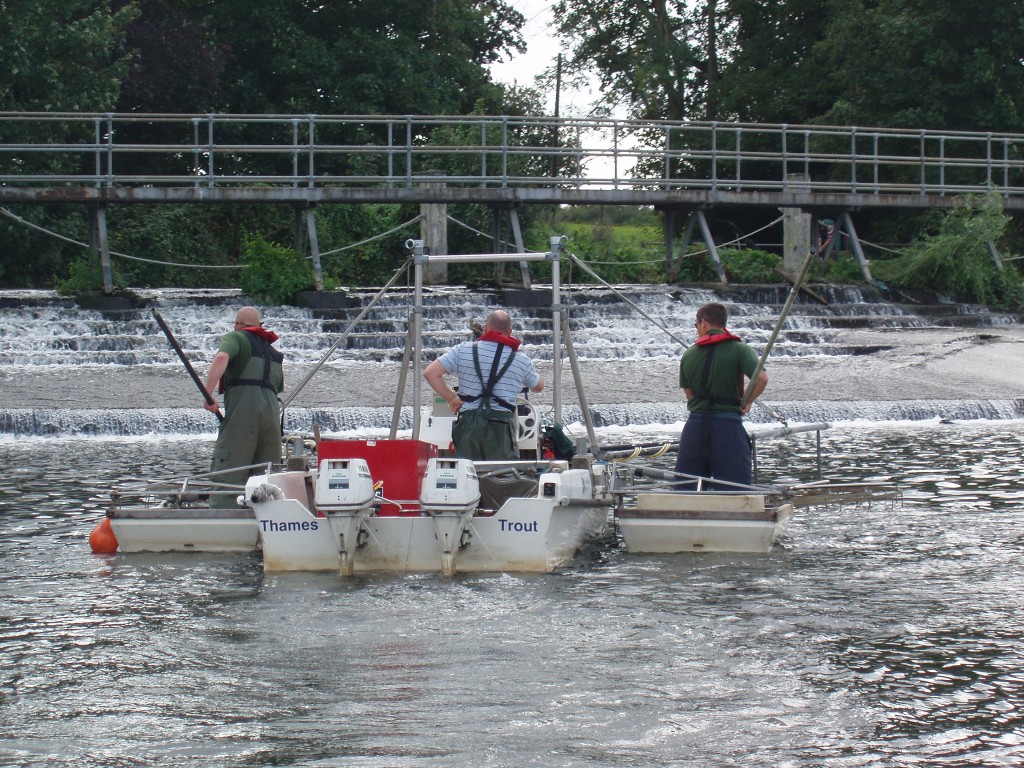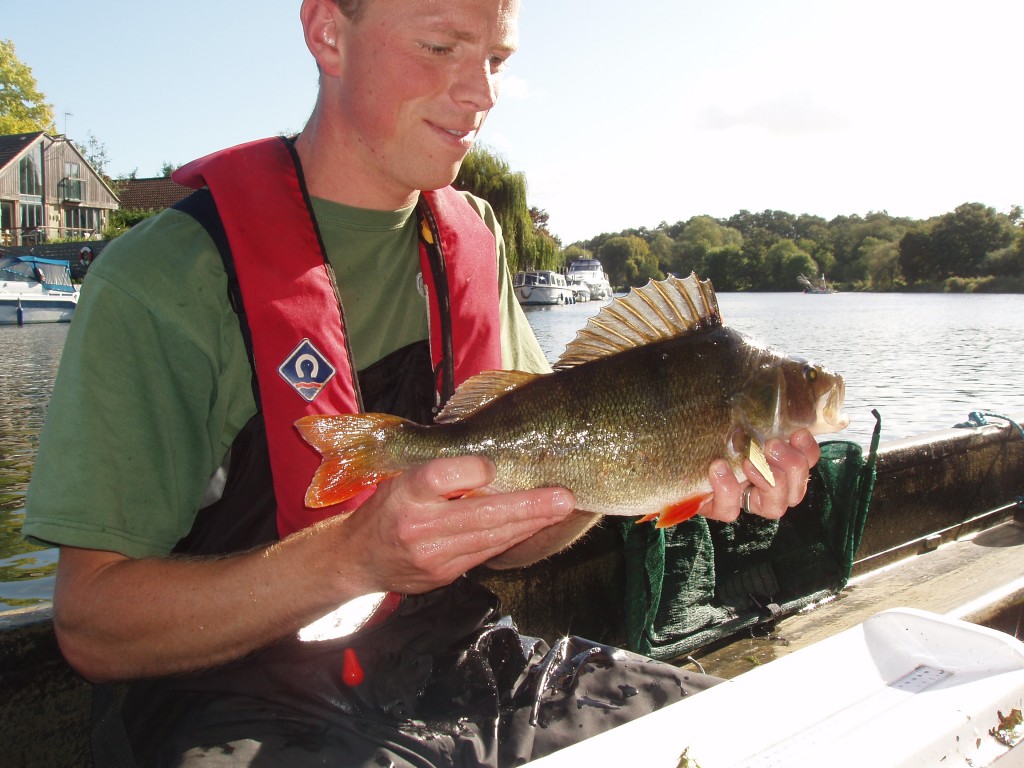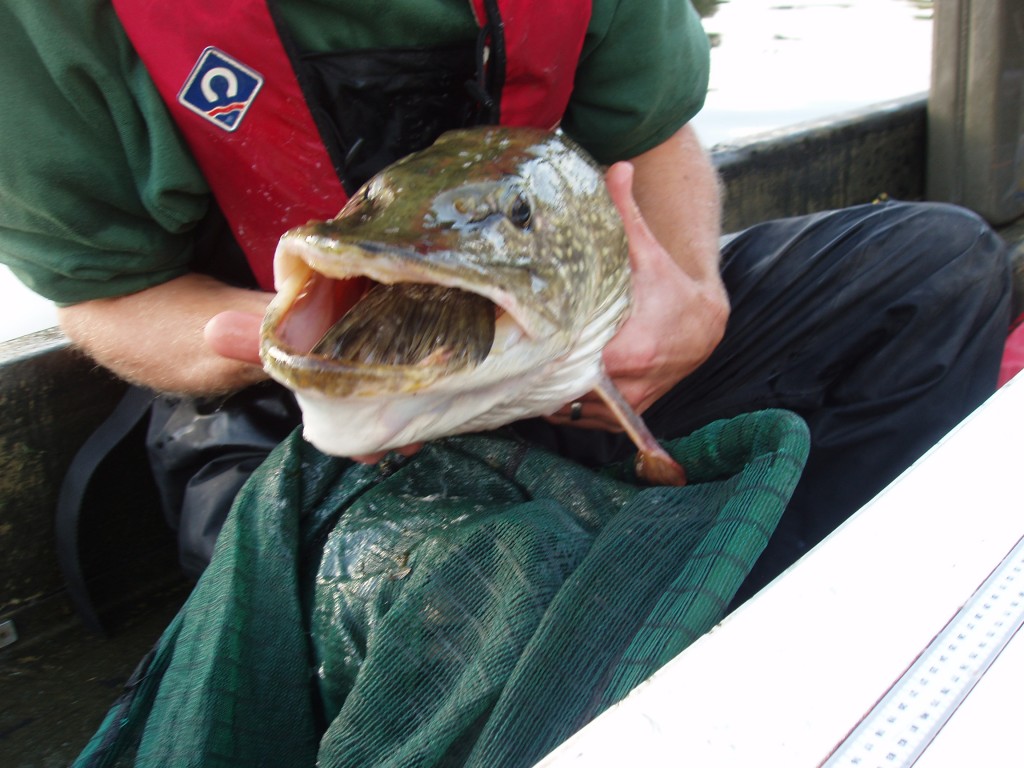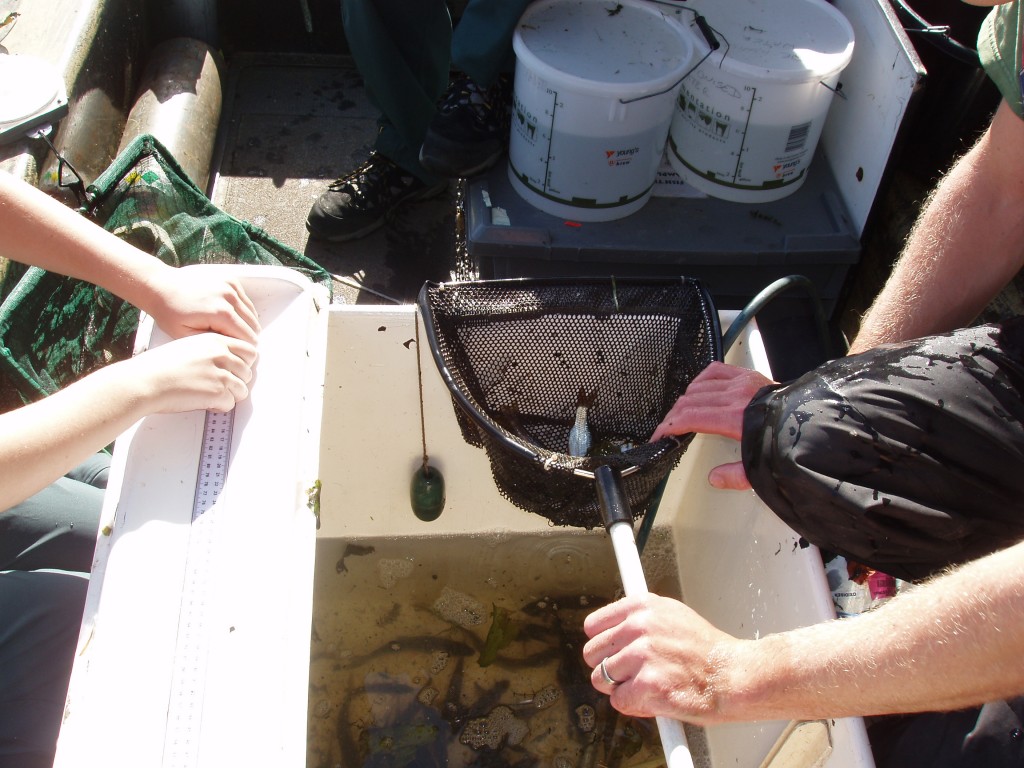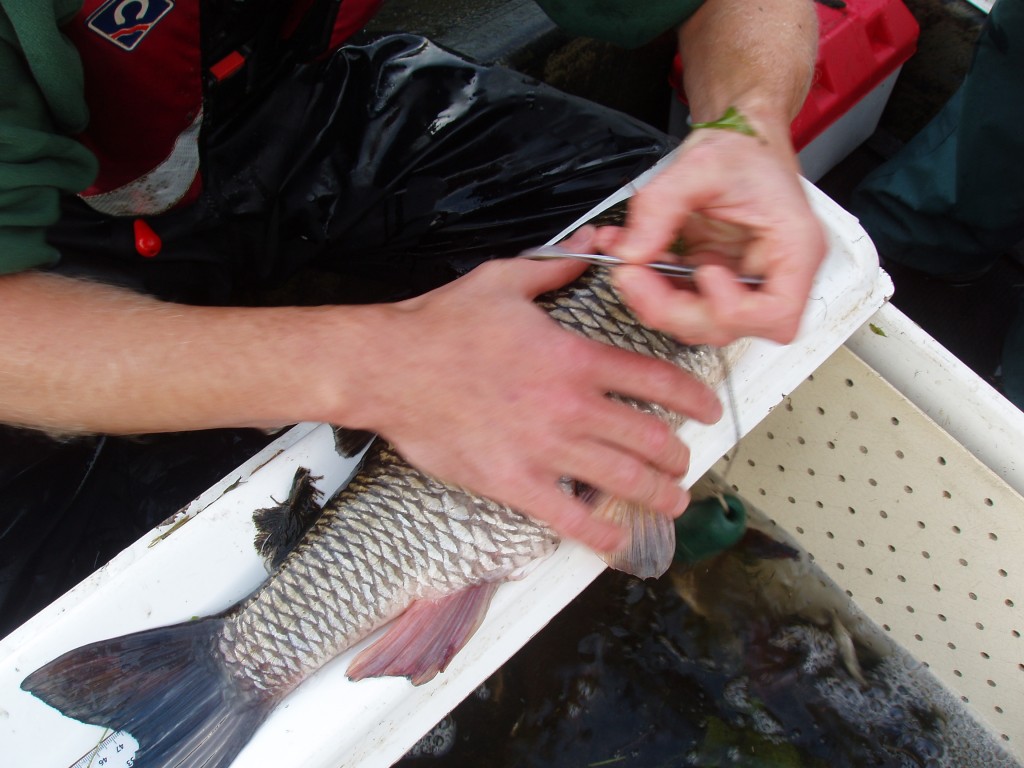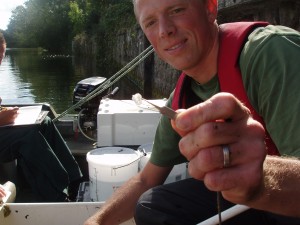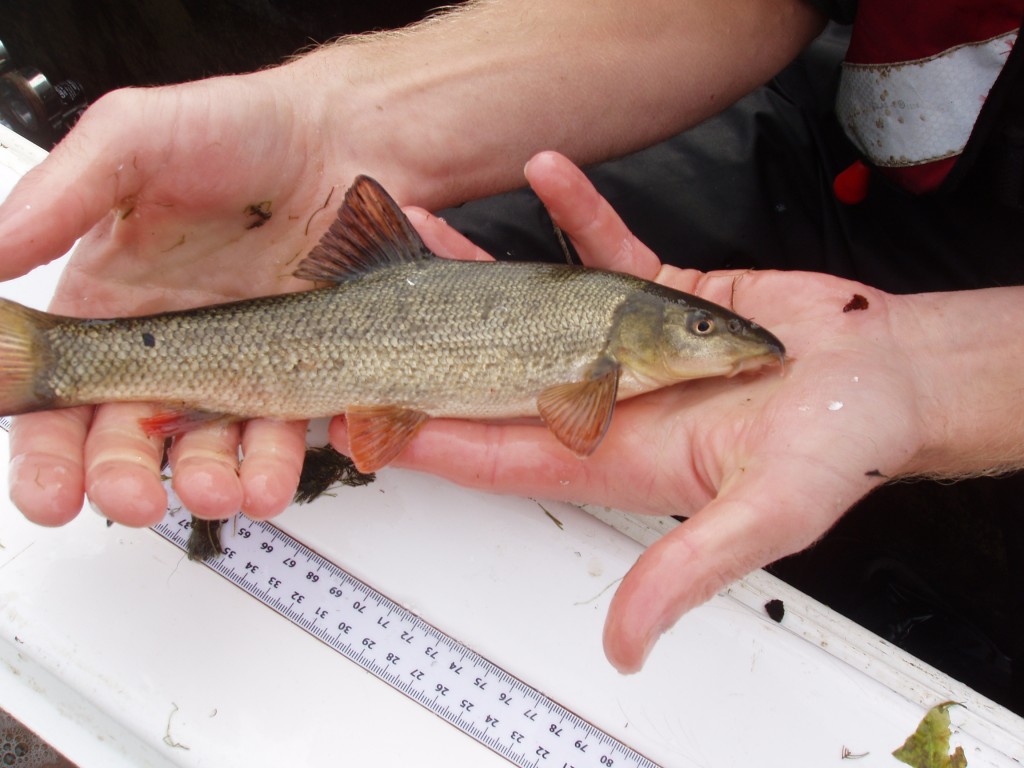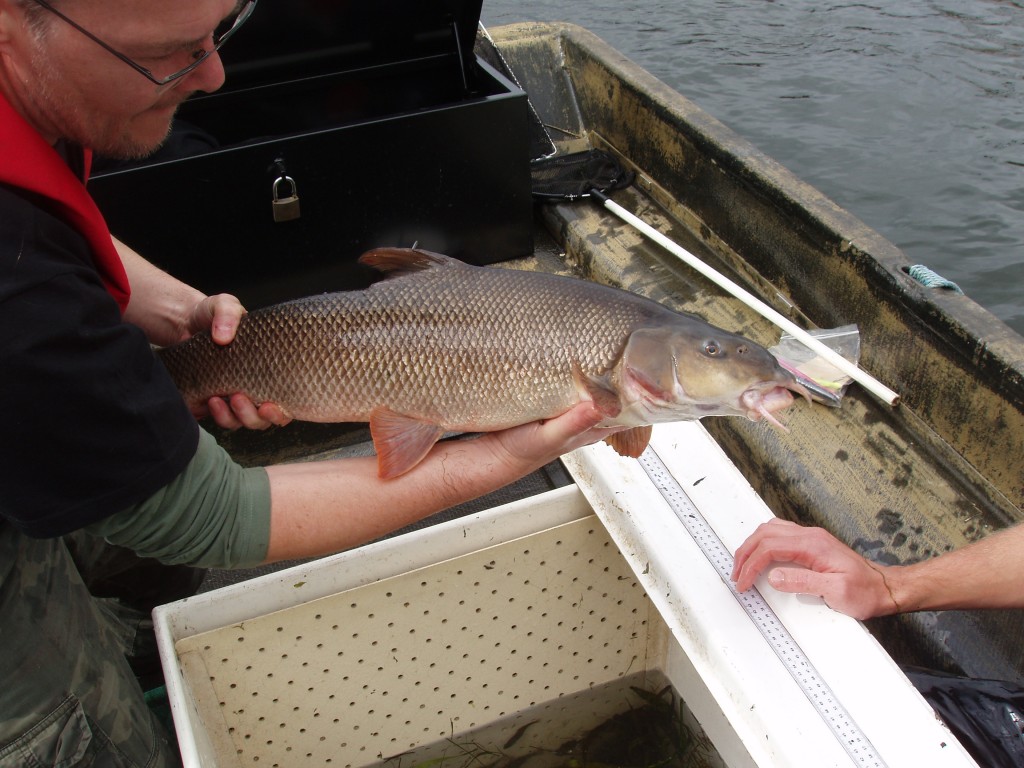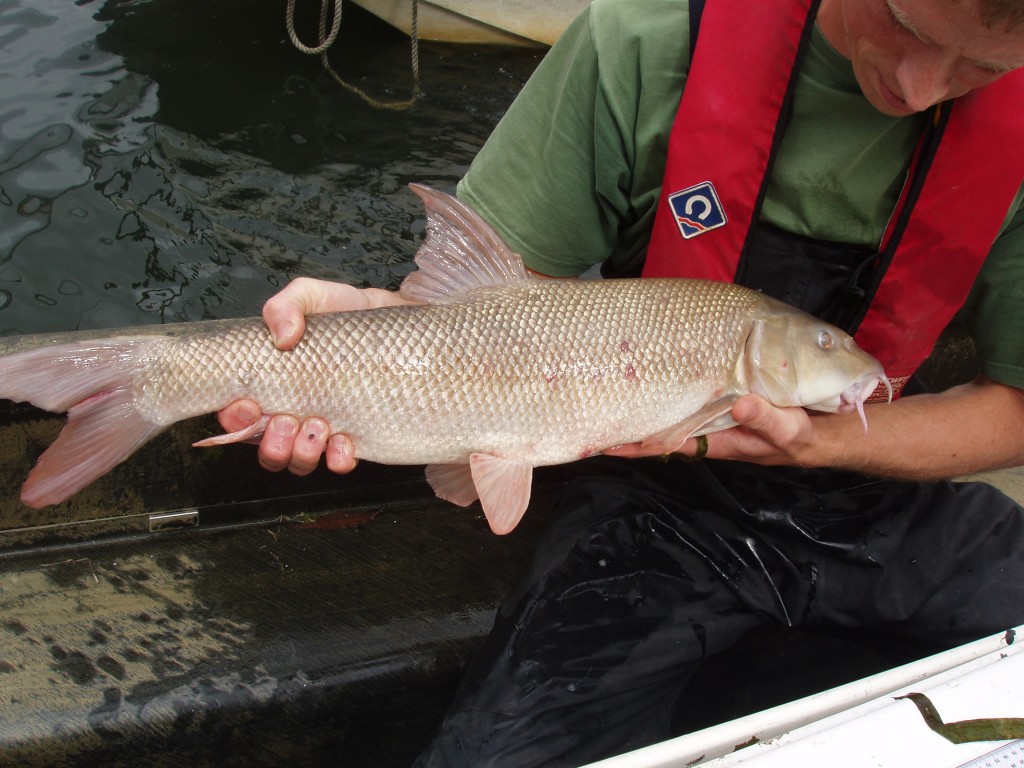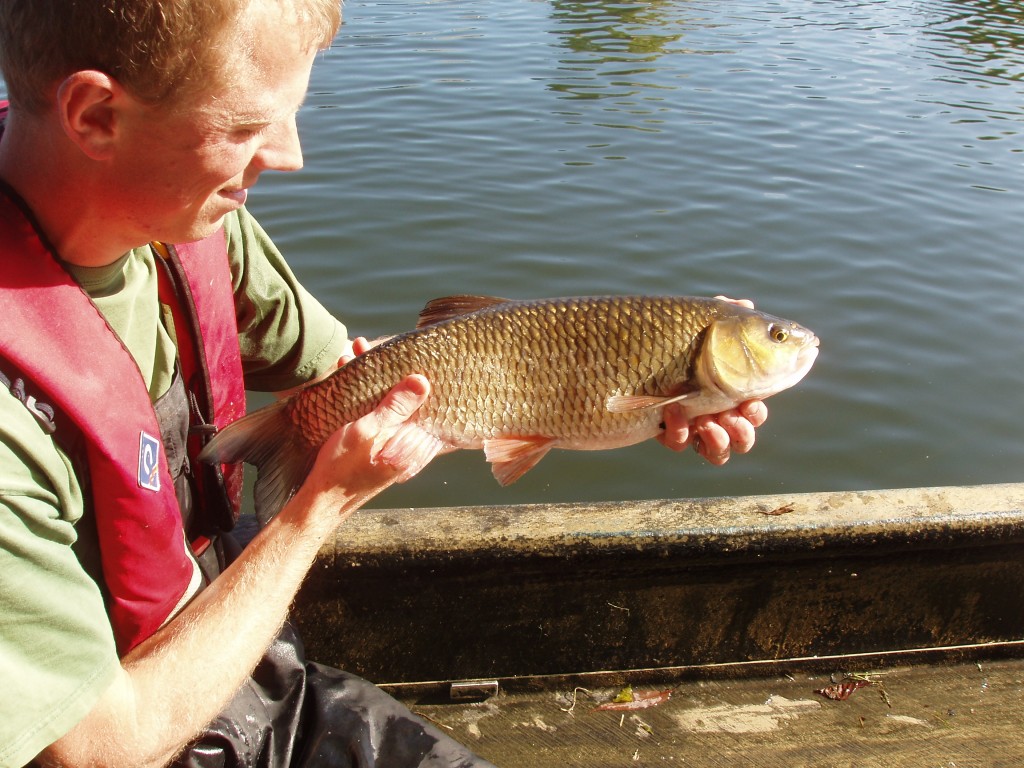The Environment Agency Fisheries team have been carrying out surveys along the river Thames and the TAC were invited along to help for a day, of course we were delighted to accept.
The fish survey is carried by out using a specially designed boat which has two arms extending from the front passing an electric current through the water. The current runs from an anode to a cathode which attracts the fish and momentarily stuns them. Once the fish are stunned, two of the fisheries team net and place the fish in a holding tank. The electro fishing is done over a timed period, on average it was around 30 minutes. The time coupled with the number and size of fish caught will give an eventual result of the survey.
Boom Boat in action
The support boat has the job of measuring each and every fish caught, recording them by species and taking scale samples within specific ranges. The scale samples are taken to scientifically calculate the year class and growth rate of the fish. Knowing this information gives the EA a clear picture about specific reaches and can assess why there maybe fluctuations. Issues such as abstraction, flow rates and pollution can all make a difference so the surveys are vitally important to the future health of the river. In addition the surveys will influence restocking, questions about habitat restoration, spawning areas and much more.
We set off in the processing boat around 6.45am, a little while after the boom boat giving them time to catch the first batch of fish. At an agreed point the processing boat was tied up and the boom boat came along side and we moved the fish into the holding tank.
Most river species were present with Roach making up a very high percentage of everything caught. The density of other species varied from reach to reach. First batch for example only a handful of Gudgeon, then the second many more. The expected Dace were there but not in large numbers compared to the masses of Roach. The Roach ranged from around 30mm up to around 200mm making them by far the dominant species. At each point Eels came out from bootlace sized to dark bigger fish around 1-2lb. One very special Silver Eel was netted around 3-4lb mark, Silver in colour meaning it was on a long journey to the Sargaso Sea.
Perch were present in all sizes with also Pike from stunning juveniles to some much bigger specimens.
Dan Horsley with a 3lb Perch
A hungry Specimen Pike with another inside
One of many small Pike
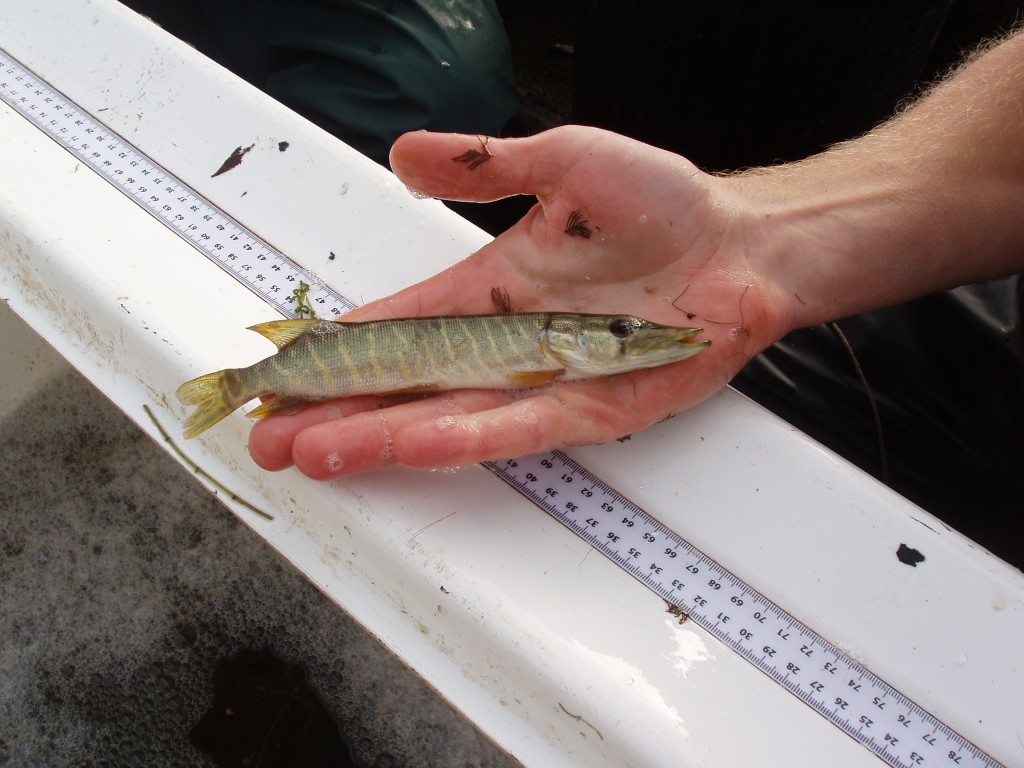
Chub were low in number but were delighted to see a few bigger fish in superb condition. Barbel were netted in a reasonable numbers where the water was oxygenated, this included some young fish which is a great indicator for the future.
Measuring one of the hundreds of fish
Taking a scale sample from a Chub
The scale to be sent for analysis
A Juvenile Barbel
Thames Barbel
A Typical Thames Chub
Huge thanks goes to Dan Horsley and the team for inviting the TAC along. Be under no illusions just how hard these guys work as spending the day measuring and recording each fish takes time and effort, as we found out.
TAC


